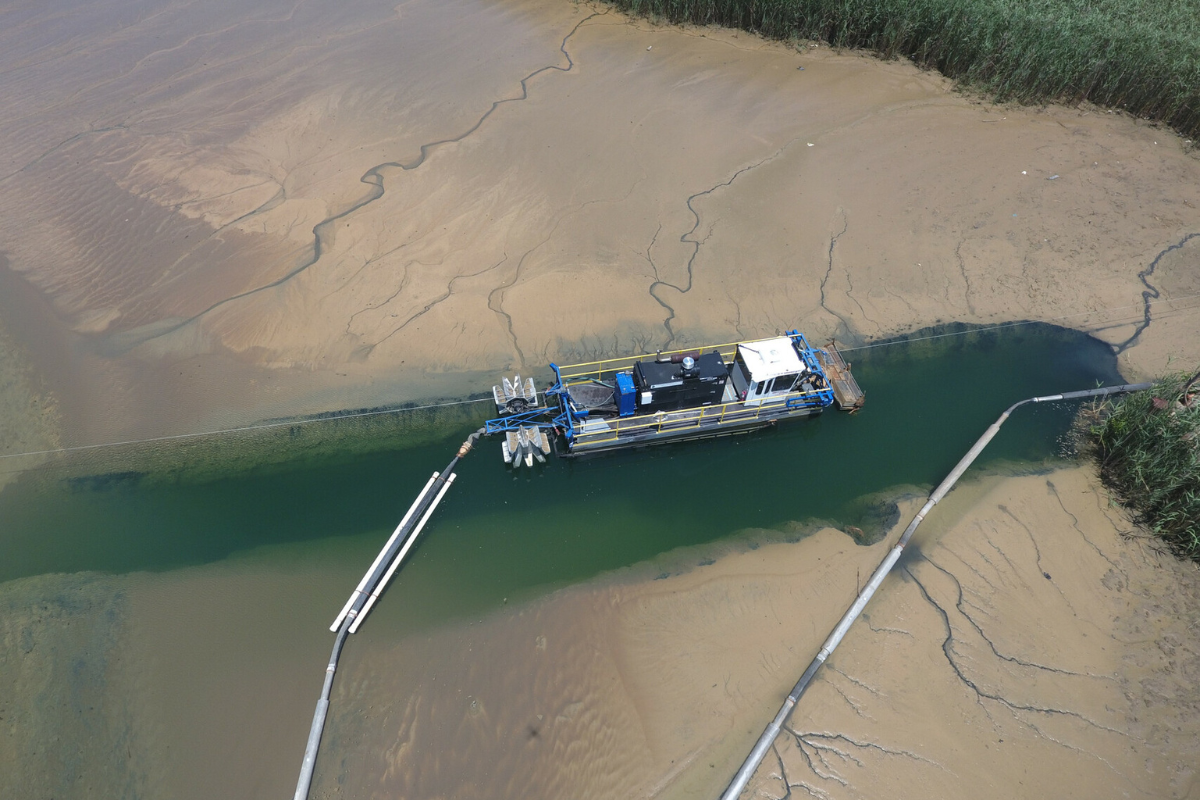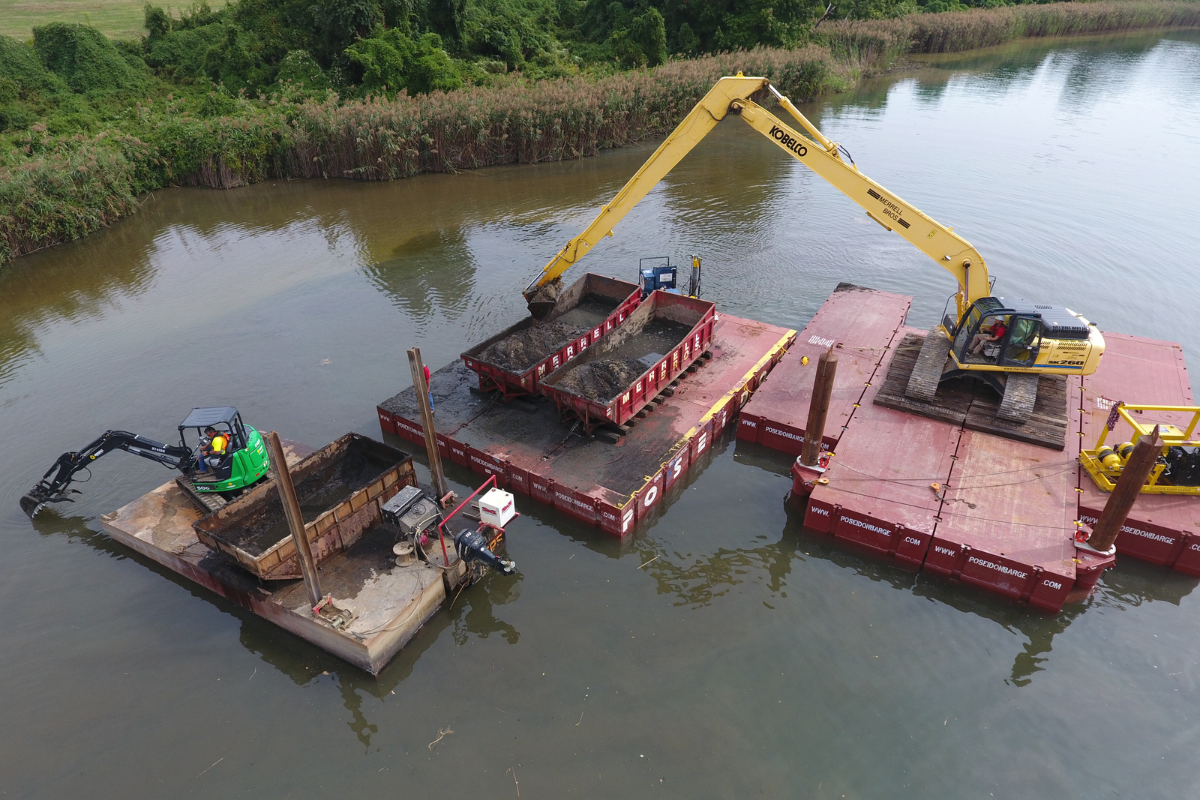Lagoon Cleaning Solutions
Maintaining the health and functionality of your wastewater lagoons through effective cleaning and sludge removal. Get a Free QuoteLagoon Cleaning Matters
Maintaining a clean and efficient lagoon system is essential for effective wastewater treatment and environmental compliance. At Merrell Bros., we specialize in comprehensive lagoon cleaning services designed to remove accumulated sludge, restore water quality, and extend the life of your lagoon.


Key Benefits of Lagoon Cleaning
- Prevents costly repairs due to sludge buildup.
- Enhances water treatment efficiency.
- Improves environmental compliance.
- Extends the life of the lagoon.
- Reduces unpleasant odors
Merrell Bros. cleans all types of wastewater lagoons, including municipal, industrial, and agricultural lagoons. We clean out and restore hundreds of lagoons each year of all shapes and sizes. Use the arrows to swipe through and see some of our lagoon cleanout projects!
Lagoon Cleaning Methods
Hydraulic Dredging

Mechanical Dredging

Which Method is Right for You?
- Sediment Type: Hydraulic cleaning is better for soft, fine sediments, while mechanical cleaning handles coarse, heavy materials.
- Water Disruption: Hydraulic cleaning is minimally invasive, leaving the water largely undisturbed. Mechanical cleaning requires more surface disruption and may involve dewatering the lagoon entirely.
- Project Scale: Hydraulic cleaning is ideal for large, deep lagoons, while mechanical cleaning is more suited for small or shallow lagoons.
Choosing the right method depends on the specific needs of your lagoon. If your project involves a large volume of soft sediments, hydraulic cleaning may offer the efficiency and minimal disruption you need. However, if your lagoon has more compacted or heavier debris, mechanical cleaning could provide a more thorough solution.
Contact us today and let our team help you find the best approach based on your project’s scale, sediment type, and environmental considerations.
Hydraulic Lagoon Cleaning Services
Hydraulic Dredging Benefits
- Ideal for large, deep lagoons with soft sediment.
- Minimal surface disruption allows for continuous operations at the facility.
- Suitable for environmentally sensitive projects that need reduced impact on water quality.
Mechanical Lagoon Cleaning Services
Mechanical Dredging Benefits
- Best for projects with heavy or compacted materials like rocks and large debris.
- Effective in smaller or shallower lagoons where precise excavation is required.
- Allows complete dewatering of the lagoon for thorough sediment removal.
Ready to Restore Your Lagoon’s Efficiency?
With over 40 years of experience, our team uses cutting-edge technology and decades of experience to ensure your lagoon operates at its full potential, while minimizing disruption to your facility.
Whether for municipal, agricultural, or industrial lagoons, we offer reliable, safe, efficient, and environmentally friendly lagoon cleaning solutions tailored to your specific needs.
Click the button below for a free quote or to speak to a team member.
